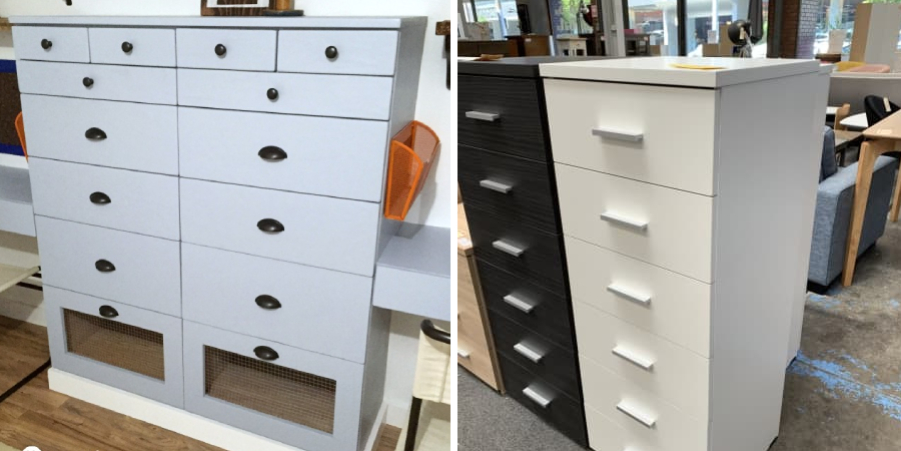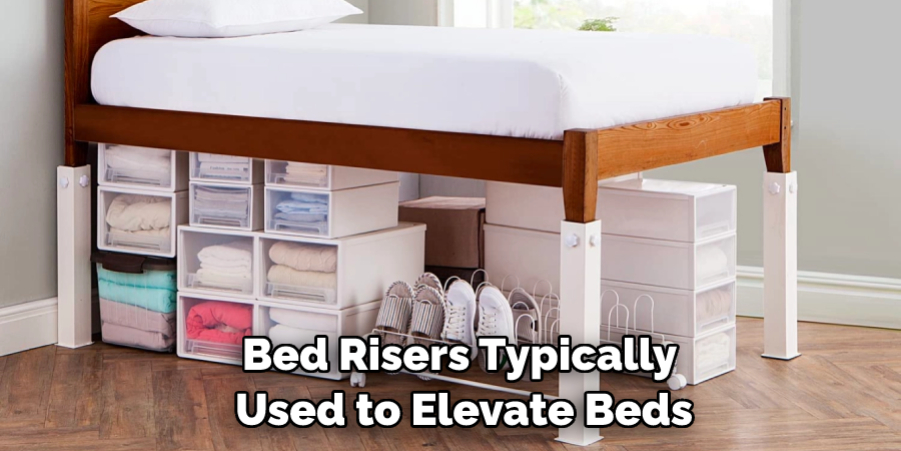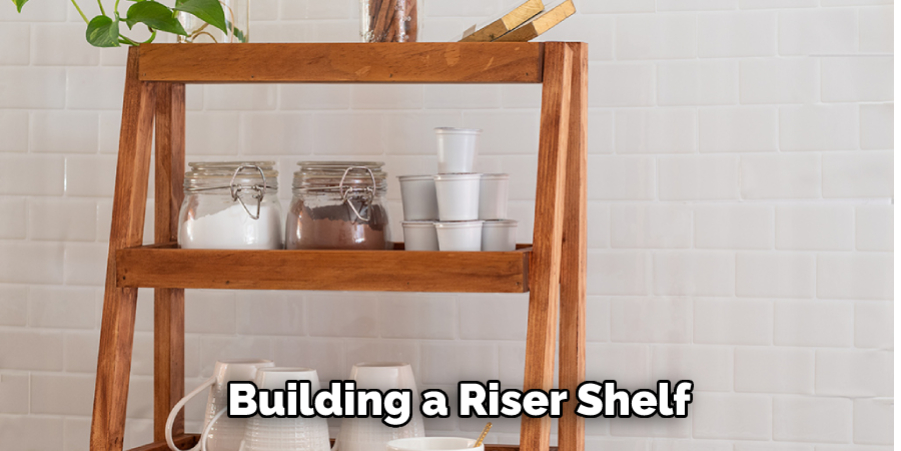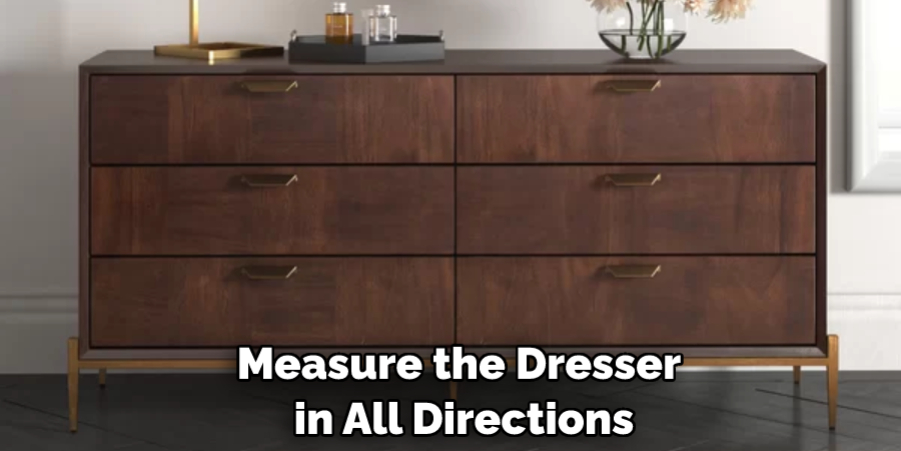Are you hoping to update the look of your dresser without having to buy new furniture? If so, there may be a solution already in your home – all it takes is a little creativity and ingenuity. If you’re looking for ways to make your dresser taller without replacing it entirely, this blog post has just what you need!

We’ll cover tips and tricks on how to make a dresser taller that will help you take the appearance of any standard-height piece from dull to delightful. Just imagine how great a longer and taller dresser would look in the room – and with our easy advice on how to do it yourself, we’ll get you one step closer to making that vision reality.
Importance of a Functional and Aesthetically Pleasing Dresser
Having a functional dresser is essential for any bedroom. Not only does it provide additional storage space for clothing and other items, but it also serves an important aesthetic purpose. A dresser that is too short or too tall can disrupt the look of a room, making the area look out of balance. By making your dresser taller, you can create a more pleasing environment in your bedroom.
Additionally, having a taller dresser will allow you to store items that would not fit on shorter dressers. This may come in handy if you have large items such as blankets or pillows that need to be stored away neatly. Making a dresser taller is relatively simple and requires just a few tools and materials. With these steps, you’ll be able to achieve the perfect height for your dresser.
Once you have determined the right height for your dresser, it is important to make sure that all of the components fit together properly. You may need to adjust the length of some pieces if they are too long or too short. Also be sure to measure twice and cut once when making any changes.
If you make a mistake with measurements, it could end up costing you more in time and materials than if you had taken accurate measurements in the first place. Lastly, always use sturdy screws and fastenings when attaching new parts to ensure that everything stays secure and safe from wobbling or shifting over time.
Required Tools And Supplies
To make a dresser taller, you will need the following materials:
- Furniture risers (e.g., wooden blocks)
- Screws
- Drill
- Nuts and bolts
- Tape measure
- Level
10 Methods How to Make a Dresser Taller

1. Adding Legs
One popular method to increase the height of a dresser is by adding legs. This not only provides extra inches but also enhances the overall style and elegance of the piece. To begin, carefully assess the existing dresser to determine the appropriate height and style of legs. Next, select legs that complement the dresser’s design and your personal taste. Gather the necessary tools and materials, such as screws, brackets, and a drill.
2. Building a Base
If you prefer a more customized approach, constructing a base for your dresser can be an excellent option. This method offers flexibility in terms of height and allows you to match the dresser’s design with your existing decor. Begin by considering the materials that suit your preferences and space requirements.
Whether you opt for wood, metal, or a combination, ensure the base is sturdy and durable. Take into account design considerations such as style, proportion, and stability. With the right tools and a detailed plan, construct a base that seamlessly integrates with your dresser, elevating it to the desired height.
3. Repurposing Furniture
Another innovative way to make a dresser taller is by repurposing other furniture pieces. This method not only adds height but also brings a unique touch to your living space.
Explore creative alternatives such as stacking vintage suitcases, shelves, or wooden crates on top of the dresser. With careful planning and consideration of stability, repurpose various furniture items to create a taller, more functional, and visually appealing dresser.
4. Using Bed Risers
Bed risers, typically used to elevate beds, can also be repurposed to increase the height of a dresser. These simple yet effective devices come in different sizes and materials. Place the bed risers under each leg of the dresser, ensuring a secure fit.

Take into account the weight distribution and stability, especially if you plan to stack multiple risers. This method provides a quick and affordable solution to add height to your dresser.
5. Utilizing Adjustable Furniture Legs
Adjustable furniture legs offer versatility and convenience when it comes to modifying the height of your dresser. These legs can be extended or retracted, allowing you to customize the height according to your needs.
Choose adjustable legs that match the style and weight-bearing requirements of your dresser. Follow the manufacturer’s instructions to securely attach the legs to the dresser, ensuring stability and safety.
6. Incorporating Decorative Molding
Enhance the height and visual appeal of your dresser by incorporating decorative molding. This method adds an elegant and sophisticated touch to your furniture. Choose molding that complements the dresser’s design and your overall decor.
Measure and cut the molding to fit the desired height. Attach it securely to the dresser, using appropriate tools and adhesive. Sand and paint the molding to create a seamless and polished look. Finally, add the knobs or handles of your choice for a finished touch.
7. Building a Riser Shelf
A riser shelf is a practical and stylish way to add height to your dresser while providing additional storage space. Determine the desired height and dimensions of the riser shelf. Select materials that match the dresser’s aesthetic and suit your storage needs, such as wood or acrylic.
Construct the shelf using basic woodworking skills or seek professional assistance if needed. Attach the riser shelf securely to the top of the dresser, ensuring it can bear the weight of the items placed on it. Line the shelf with fabric or place a decorative tray on top to add extra style.
8. Incorporating Stackable Storage Units
Stackable storage units, such as plastic drawers or wire baskets, can be a convenient method to increase the height of your dresser while adding functional storage space. Choose stackable units that fit the dresser’s dimensions and can be easily secured together.
Organize your belongings within the units, optimizing storage capacity while maintaining easy access to your items. If desired, you can use decorative accents to unify the look of the dresser and stackable units.
9. Opting for Custom-made Extensions

For those seeking a truly personalized solution, custom-made extensions offer the perfect answer. Consult with a skilled carpenter or furniture maker who can create additional sections to attach to the existing dresser.
Together, design extensions that seamlessly blend with the dresser’s style, color, and materials. Ensure proper measurements and secure attachment for stability and longevity. Once the extensions are attached, a dresser can be made taller and longer with ease.
10. Seeking Professional Assistance
If you are not confident in your DIY skills or prefer a hassle-free approach, consider seeking professional assistance. Furniture designers, carpenters, or handymen can provide expert advice and services to modify the height of your dresser according to your specifications and requirements.
Consult with professionals to discuss your vision, budget, and timeline, allowing them to guide you through the process. With their assistance, you can be sure that your project is completed with safety and efficiency.
Some Common Mistakes When Making a Dresser Taller
1. Not Measuring the Dresser First
If you don’t measure the dresser, it may be too tall or too short when finished. Make sure you measure the dresser in all directions and take note of the height of any legs or other additions that will affect how much taller it can be made.
2. Not Taking into Account Weight Capacity
When adding height to a dresser, it’s important to consider how much weight the dresser is able to hold. If the dresser is too top-heavy or overloaded, it may become unstable and unsafe to use.
3. Not Using the Right Materials
When selecting materials to add height to a dresser, make sure they are strong and sturdy enough to support the added weight of whatever you’re putting in the dresser. You should also consider how the materials look and whether they match the dresser’s existing design.

4. Not Reinforcing the Legs
If you are adding height to a dresser, you may need to reinforce the legs in order for it to be stable and safe. This can easily be accomplished with some simple bracing or reinforcements, such as using wood glue or screws.
Conclusion
Despite the challenge presented by having a low dresser, there are various ways that you can make your dresser appear taller. Whether it be purchasing tall legs, moving components around, or raising your platform bed, searching for creative solutions can often be the key to success. There are many directions to take if you would like to increase the height of your dresser.
Finding the one that works best for you and your space is a great way to satisfy your needs. You can update any look with these small tricks while maintaining functionality and style. Follow these simple instructions outlined in this blog post about how to make a dresser tallerand you’ll be able to get the job done with ease.
